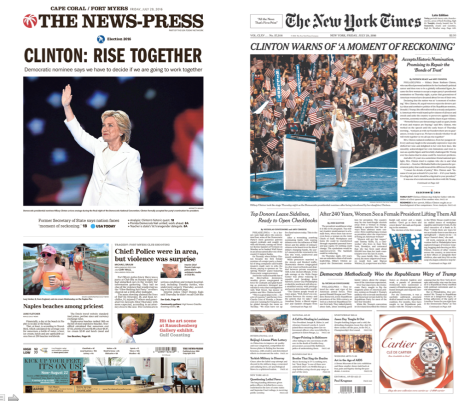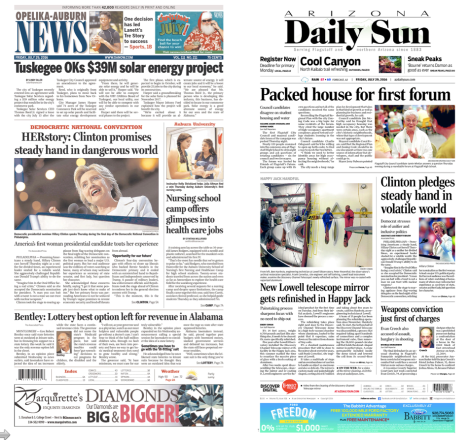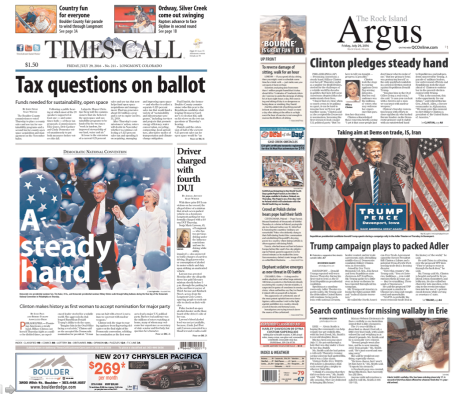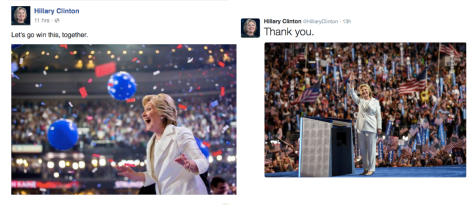At the 2016 Democratic National Convention history was made. Hillary Clinton became the first woman presidential nominee from a major political party.
As I discuss in previous posts, visual are more than just aesthetic. They play a critical role in the political communication process, especially in creating an image of a candidate in the mind of the voting public.
Indeed, Hillary Clinton’s nomination was a significant event in our American story. Not surprisingly, this was the lead story on most U.S. newspaper front pages the following day. What presents an interesting case study is the choice of photographs used by news outlets across the country. While a number of outlets used a large and prominently placed image of Hillary Clinton (via video screen as she didn’t make a live appearance that night), other outlets used an image of Bill Clinton. While Bill Clinton had given an important speech that same night, the real story was the nomination of the first woman as a major party nominee. Considering journalism as the first draft of history, it could be argued that the front pages that used a photo of Bill Clinton (instead of Hillary Clinton) missed the story and created a visual inaccuracy for history.
I am certainly not the only one to have made this observation. The Twitterverse took note, as did a number of media outlets, including the Huffington Post and New York magazine.
However, it must also be noted that there were some intervening complications regarding imagery, as reported by Poynter. First, as previously stated, Hillary Clinton didn’t appear in person that night. She only appeared via live video. Live video doesn’t make for as strong of a photograph as does a person standing directly in front of you. In addition, she appeared very late, which could have been after some news deadlines. As another alternative, a number of newspapers used photos of cheering Clinton supporters on the front page. Others used a photo of Bill Clinton.
Below I provide examples of the various strategies that newspapers used in visually reporting this story.


One newspaper, The Seattle-Times, acknowledged the concern, issuing an apology to readers the following day.

The convention closed with Hillary Clinton’s acceptance speech. Another historic night. But, again, the following day news outlets visually reported the story in dramatically different ways.



Enter social media. Social media provide unprecedented opportunities for political candidates to communicate directly with the voting public without relying on the media as gatekeepers. The Clinton campaign seized on this opportunity via Facebook and Twitter, using strong, positive images of the candidate following her acceptance speech.

The 2016 campaign provides the opportunity to continue the systemic study of images of political candidates both in mass-mediated and candidate-controlled outlets.
Image credits: Images created via screen captures of newspapers and social media posts.